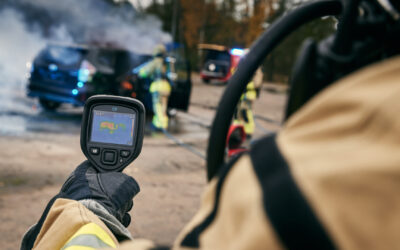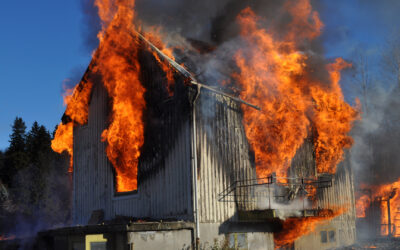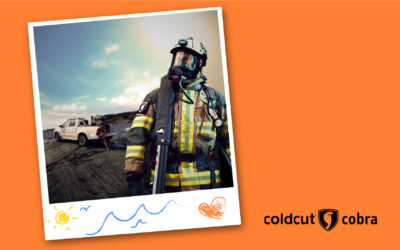The report by the Swedish Civil Contingencies Agency (MSB), titled “Demonstration of Extinguishing Method of Lithium-Ion batteries: Method application at different aggregation levels – module, sub-battery, electric car pack and vehicle level” has recently been presented and is now also published on their website.
The report is based on the results of a series of tests carried out in a collaborative project involving several stakeholders, including Cold Cut Systems. The tests were designed to examine whether injecting water into a Li-ion battery that had gone into thermal runaway could effectively suppress and extinguish that fire without reignition.
The tests were very successful and demonstrated, among other findings, that:
- It is possible to interrupt thermal propagation in a Li-ion battery through an active extinguishing operation where the battery is flooded with water.
- Extinguishing operations where the Li-ion battery is flooded with water can shorten the operation time and reduce personnel and material resource requirements.
Summary of the report
Electric vehicles (EVs) have become more widespread over the last five years and their use is expected to grow as alternatives to fossil fuels are sought. The traction battery in an electric vehicle has a very high level of safety and these road vehicles are subject to regulations and international standards regarding safety. Despite this, there have been a number of fires around the world involving electric vehicles and these fires present a number of risks for the public and first responders. Firefighters need to develop safe systems of work that enable them to respond effectively to a fire involving a Li-ion battery in an electric vehicle and ensure that no re-ignition can occur after the fire has been extinguished.
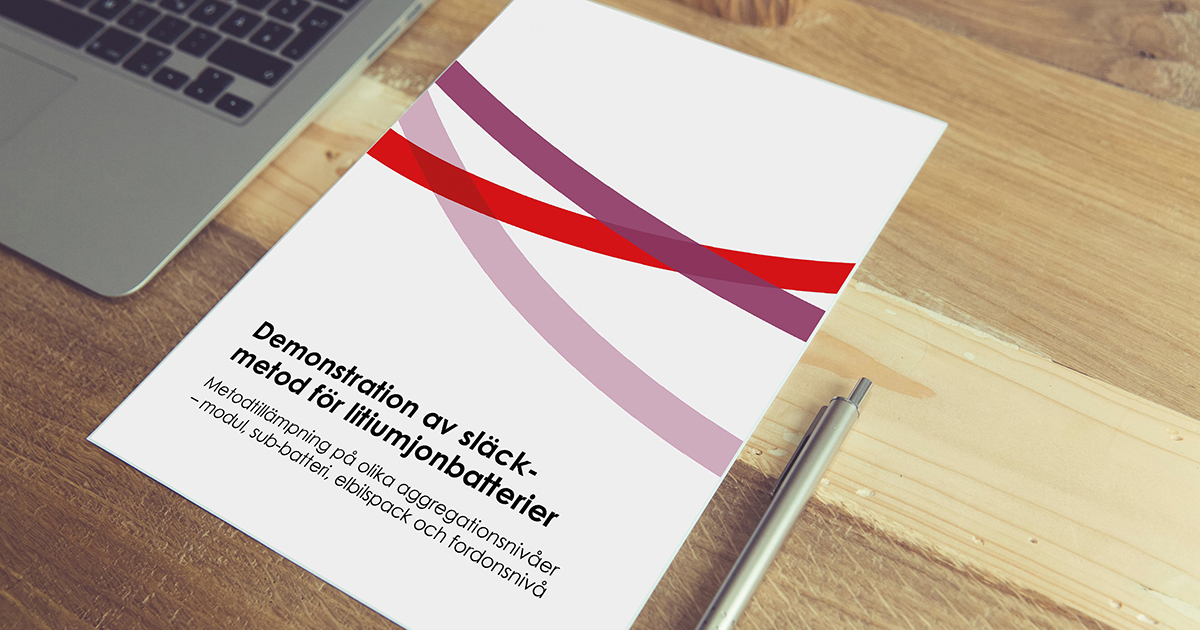
Methodology
A review of existing research literature on Li-ion battery fires was carried out to ensure that all the known risks were fully understood as well as the mechanism of spread of fire within Li-ion batteries. One of the overall findings from this research was that the most effective suppression of a thermally propagating Li-ion battery is achieved when coolant can be applied as close as possible to the core of the heat source within the battery. Fresh water is the most readily available medium for first responders and was therefore the chosen agent for these tests. One objective of the tests was to see if safe tactics could be developed for first responders to use in applying water to cool the interior of a Li-ion battery in thermal runaway.
All the tests were carried out using Li-ion batteries with 100% state of charge. Thermal runaway was initiated using a heating plate that was installed pre-test. The battery units were also modified to overcome some safety systems; the modifications had no impact on the cooling effect of the water.
In tests ii) and iii), once thermal runaway had been initiated in one cell of the battery, there was a delay of 15 minutes before extinguishing media was applied. This was to simulate the time taken to call the emergency responders and for them to arrive at the scene. The tests were terminated when visual inspection indicated no continuing thermal propagation and the temperatures recorded on the Thermal Imaging equipment were below 50°C.
The three tests, in sequence, were:
i). Three stand-alone subpacks – four battery modules at 24 Volts, 6.54 kWh
ii) One stand-alone traction battery at 14.8 Volts, 2.8 kWh
iii) One full size electric vehicle with traction battery – 27 modules at 14.8 Volts, 2.8 kWh
The extinguishing media used were:
- Cobra Ultra High Pressure Lance (UHPL) firefighting equipment – this equipment uses abrasive entrained in water to pierce and then water mist to suppress/extinguish. This is all applied using one continuous action. This uses water at 58 l/min.
- Insulated Penetrating Lance equipment – this uses a low-pressure water supply to apply water but without using any abrasive, this uses water at 25 l/min.
- Water injection using an axe and a pipe connected to a water supply. This uses the axe to make the hole in the battery and then the pipe to inject the water into the battery. This uses water at 75 l/min.
Test Results
In the first two tests, all three methods for injecting water into the battery itself worked to the extent that they were able to reduce the heat in the affected battery cells and extinguish the fire. The batteries did not reignite after being extinguished in any of the tests. However, use of an axe to make the water access hole in the battery casing caused an initial increase in intensity of the emerging jet flames from the battery until the pipe was connected and water was able to flood the battery cells. This method was also the least accurate in terms of targeting the water to those cells in thermal runaway or in thermal propagation.
A key factor was the assumption that in the extreme case of battery modules not being harmed, their voltage would stay intact, while the other extreme case would be that a completely burned-out battery module would show no residual voltage. Thereby the remaining voltage of individual battery modules was considered an indication of the extent of damage caused by the thermal runaway propagation. In all the tests, the affected battery cells and the neighbouring cells were cooled and showed a drop in voltage. Other battery cells maintained either a full charge or residual charge.
The final full EV test involved a vehicle that was fully involved in fire (i.e. the vehicle cabin was fully involved and cells within the Li-ion battery were in thermal runaway. The vehicle cabin was extinguished using a conventional firefighting nozzle, then Thermal Imaging equipment was used to show the hottest spots within the battery. Cobra was then used to penetrate both the car bodywork and the battery casing and then apply water within the battery itself. The total period of fire suppression was 10 minutes from the first approach with Cobra to the conclusion of firefighting when all surface temperatures had fallen below 50°C. 15 minutes after extinguishment, the whole vehicle was twice lifted 1 metre using a forklift truck and then dropped to simulate rough handling – no reignition occurred. The car was then placed in a quarantine location for two days with no reignition.
Cobra was used for around five minutes using 240 litres of water. The firefighting nozzle was used for four minutes using 510 litres of water giving a grand total of 750 litres. This is significantly less than the 1670 litres used in a test conducted by Exponent and The Fire Protection Research Foundation reported in 2013.
The use of Cobra permits the operator to act from a safer distance when establishing an ingress hole for water injection.
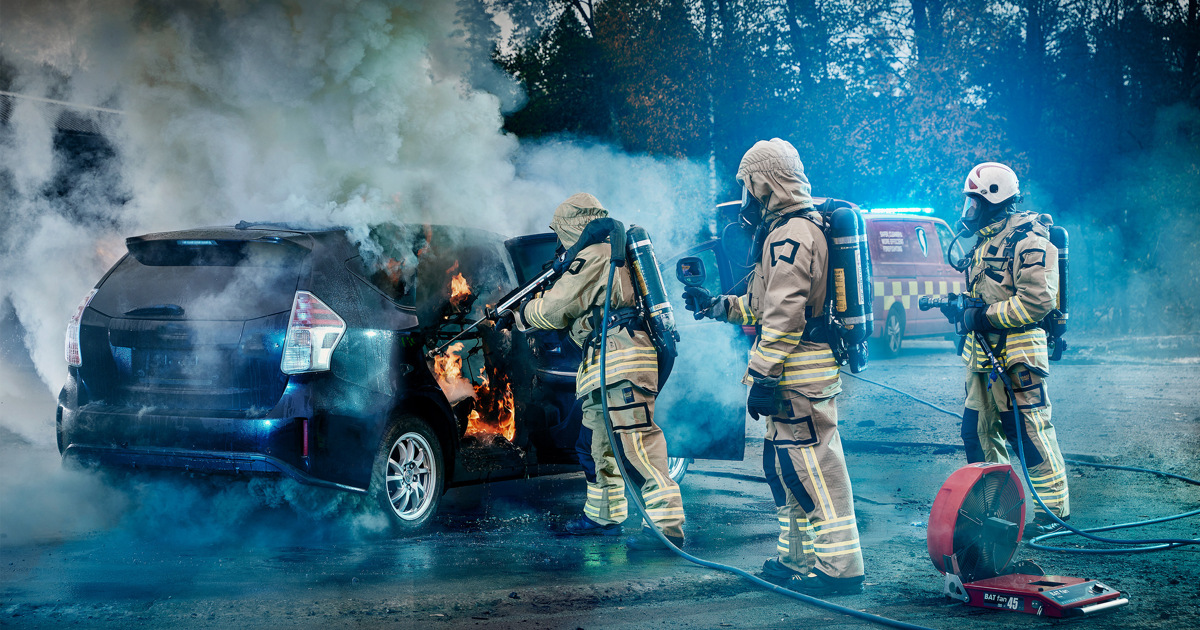
This image visualizes the tests on the full Electric Vehicle and is not from the actual test.
Conclusions
- It is possible to interrupt thermal propagation in a Li-ion battery through an active extinguishing operation where the battery is flooded with water.
- Extinguishing operations where the Li-ion battery is flooded with water can shorten the operation time and reduce personnel and material resource requirements.
- It is difficult to determine the degree of propagation in a Li-ion battery during an ongoing fire based on external observable factors such as thermal imaging, temperature monitoring, smoke, and noise.
- Cell chemistry, state of charge, battery architecture and vehicle architecture are system properties that affect how a thermal surge and propagation develops during a thermal event in an electric vehicle.
- When planning an intervention, it is important to first look at the vehicle’s Rescue Sheet and Emergency Response Guide (ERG) to assess the conditions for an active extinguishing operation.
- Conducted trials show that it is possible to access the battery with the tools tested. Thermal Imaging Cameras and Rescue Sheets can provide information that provides better likelihood of success in an operation.
- The risk of residual electrical and chemical energy, which can lead to re-ignition must always be considered when handling an electric vehicle and its traction battery after a thermal event.
The full report can be downloaded here: www.msb.se (currently in Swedish only)
Cobra & EV Fires
The method of extinguishing EV battery fires with Cobra is based on the Swedish Civil Contingencies Agency (MSB) report, “Demonstration of extinguishing method of lithium-ion batteries”. This film is made to visualize the tests that were made on the full EV and is not from the actual tests.
If you have any questions regarding the report and how Cobra can be used to handle fires involving Li-ion batteries, please get in touch with us.
